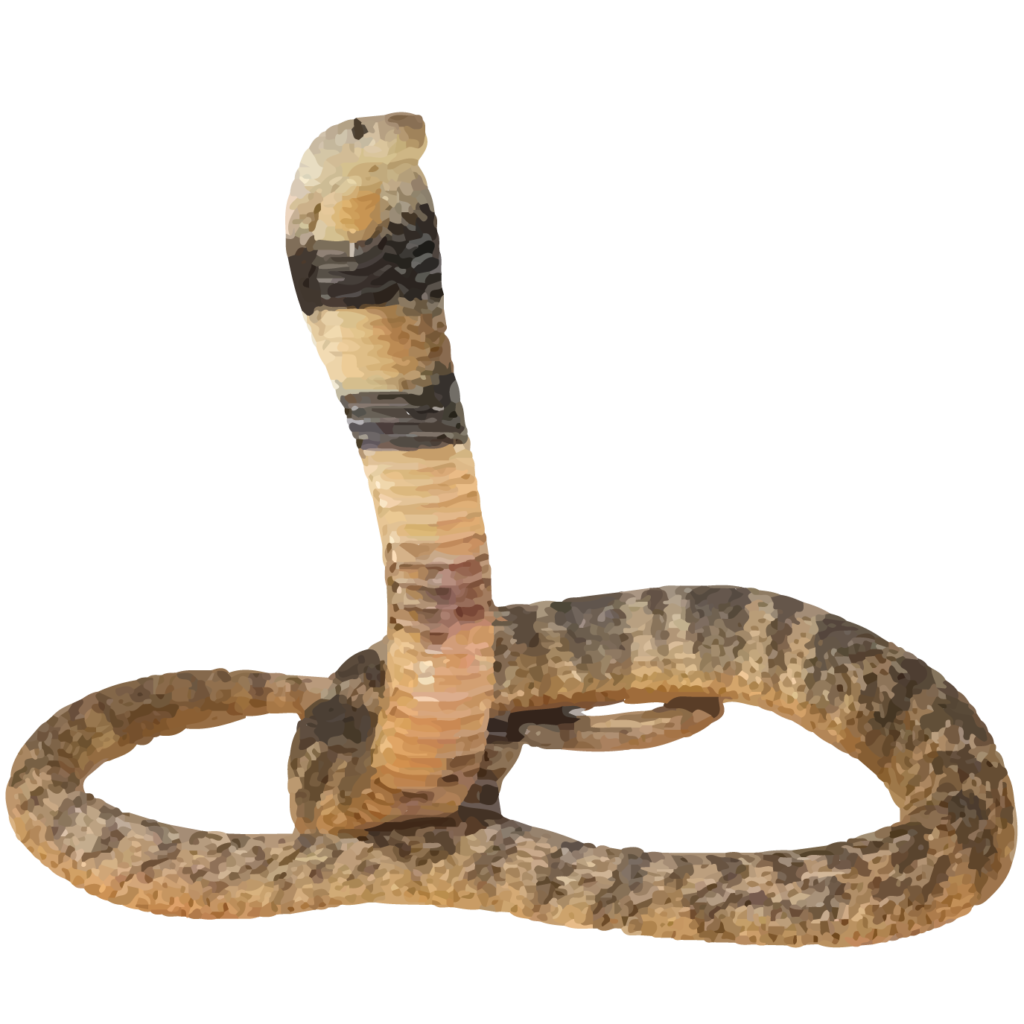Caspian Cobra ( Central Asian Cobra)

- Habitat: Arid and semiarid, rocky or stony foothills usually covered with scrubs.
- Distribution: North regions like Himachal Pradesh and Kashmir.
- Diet: Small mammals, amphibians, occasionally fish, other snakes, birds and their eggs.
- Size: 1 to 1.5 meter
The Caspian Cobra (Naja oxiana), also known as the Central Asian Cobra or Oxus Cobra, is a highly venomous species of cobra found in parts of Central Asia. Here are some key details about this species:
Physical Description:
- Appearance: The Caspian Cobra has a robust body with smooth scales. Its coloration can vary from light brown to dark brown or even black, sometimes with a faint banding pattern. The belly is usually lighter, ranging from cream to light yellow.
- Size: Adults typically measure between 1.2 to 1.6 meters (4 to 5.2 feet) in length, though some individuals can reach up to 2 meters (6.6 feet).
- Head and Hood: Like other cobras, it has an expandable hood. When threatened, it will spread its hood to appear larger and more intimidating.
Habitat:
- Geographical Range: The Caspian Cobra is found in parts of Central Asia, including Iran, Turkmenistan, Uzbekistan, Tajikistan, Kyrgyzstan, Kazakhstan, and Afghanistan.
- Preferred Habitat: It inhabits a variety of environments, including arid and semi-arid regions, grasslands, rocky hillsides, and scrublands. It can also be found near human settlements, especially where rodents are abundant.
Conservation:
- Status: The Caspian Cobra is not currently considered endangered. However, it faces threats from habitat destruction, human persecution, and the illegal pet trade.
- Protection: Conservation efforts focus on habitat preservation and reducing human-wildlife conflict. Educating local populations about the ecological role of cobras and safe practices to avoid snakebites is also crucial.
Importance:
- Ecological Role: The Caspian Cobra plays an important role in controlling populations of rodents and other small animals, thus contributing to the balance of its ecosystem.
- Human Interaction: While its venom is highly toxic and potentially deadly to humans, bites are relatively rare and usually occur when the snake is accidentally provoked or handled. Antivenom is available and effective if administered promptly.
